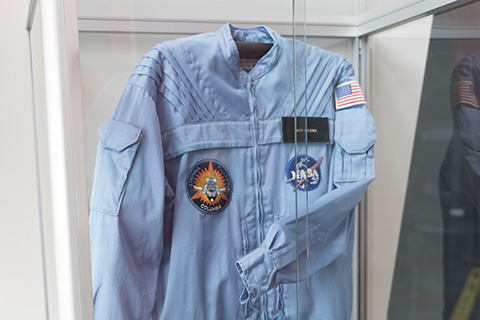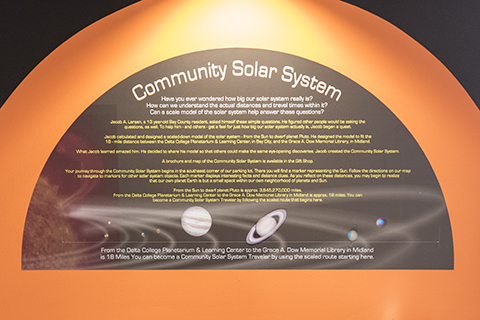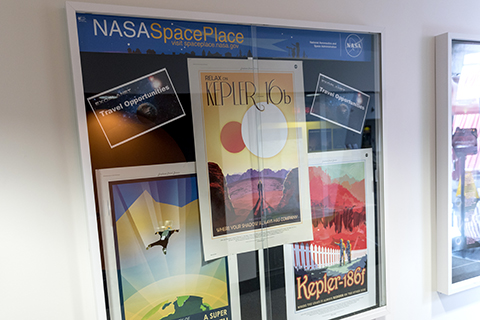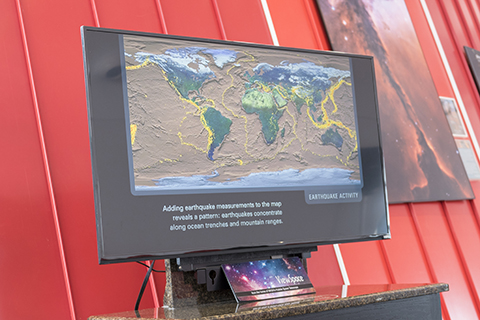Located in the heart of downtown Bay City, the Delta College Planetarium has delighted
more than 430,000 visitors since opening in 1997.

Nowhere else in the Great Lakes Bay Region will you find such a unique, modern facility
with a focus on learning. We are one of three regional Delta College centers outside our main campus. Approximately 700 Delta College students take college classes
at this center each year.
The $8.75 million facility, funded by NASA, houses a state-of-the-art Planetarium Digital 360 theater, seven classrooms, a large multipurpose two story room called "The Space Explorer’s Hall," a computer lab, rooftop observation deck, gift shop, office/learning support area and a magnificent lobby with a floor that displays the major star constellations. The Planetarium Digital Theater has a Digistar full dome video projection system housed under a tilted 50 foot domed screen with 140 unidirectional seats. The entire building is architecturally designed as a metaphor of astronomy and space exploration.
Exhibits
-

Astronaut suit and space shuttle tile
A special display showcases the jumpsuit for Michigan astronaut Jack Lousma. A native of Grand Rapids, Jack flew in America’s first space station called Skylab in 1973 and in the Space Shuttle Columbia in 1982. Lousma is one of 12 Michigan native astronauts. An authentic thermal protection tile used for the Space Shuttle is also a part of the display.
-

Community solar system project
The Community Solar System Project was conceived by Bay County area student Jacob Larsen. It has posted displays of the Sun and major planets between the Delta College Planetarium in Bay City and the Dow Memorial Library in Midland. The outdoor display panels are placed to demonstrate the distances between the planets if the Sun-to-Pluto distance were collapsed to the 19 mile separation between the two buildings.
-

NASA Space Place
This display area changes to show some of the latest work at NASA, from spacecraft exploration to current events to the International Space Station. Students and parents can explore more at NASA's Space Place.
-

National Solar System Project
The National Solar System Project marks how the planets would be separated if the Sun were located at the Kennedy Space Center in Florida and Pluto were located at the Delta College Planetarium. On this scale, the Sun-Pluto separation of 3.67 billion miles is scaled into the 1200 miles separating the two points. Each planet is strategically placed at a planetarium along the path.
-

ViewSpace
ViewSpace is a self-updating multimedia astronomy display that uses internet-fed content from the Space Telescope Science Institute. It provides a variety of visual programs that are dynamic, stimulating and informative. The short features combine art, science and music. ViewSpace is an astronomy exhibit that never goes out of date, and one that brings the advantages of NASA’s investment in science and exploration to the public.
Contact us
Delta College Planetarium
100 Center Avenue
Bay City MI 48708
planetarium@delta.edu
989-667-2260
Hours
Monday, 8am – 4pm
Tuesday, 8am – 4pm
Wednesday, 8am – 4pm
Thursday, 8am – 4pm
Friday, 8am – 3:30pm
Saturday, 1 – 4pm, 6 – 7pm
Sunday, closed
